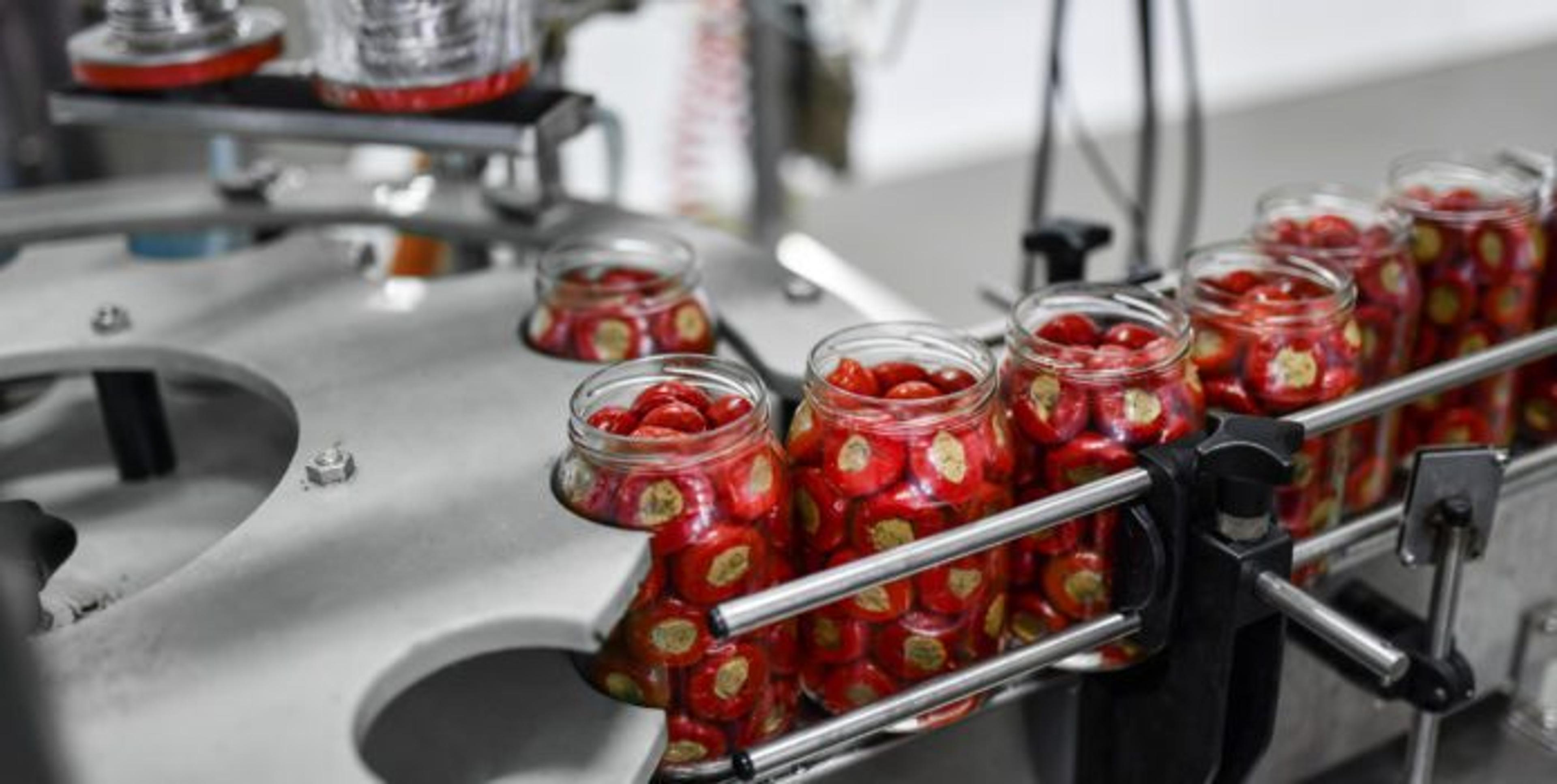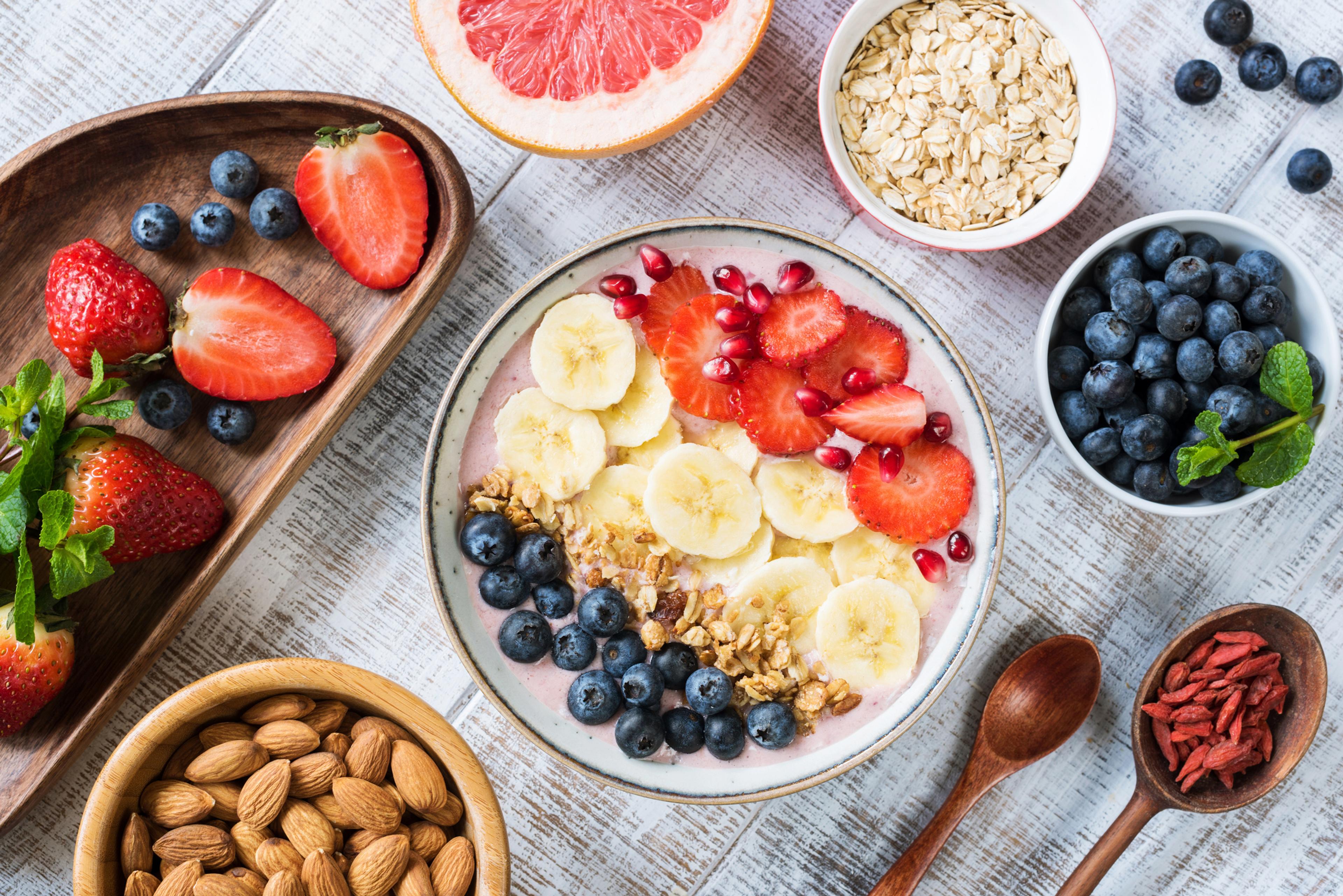Are Food Additives Harmful to Our Health?

00:00
00:00
About the Show
- What are food additives and why they’re added to food
- If additives are something we should avoid entirely
- Are additives harmful or can some of them be beneficial to our health
- If we avoid foods with unrecognizable names in the ingredients
Transcript
Here is the full transcript of this episode. You can listen to the audio version on streaming platforms or watch on YouTube.
This is A Healthier Michigan podcast, Episode 123. Coming up, we discuss food additives and the impact they have on your health.
Welcome to a Healthier Michigan podcast, the podcast that’s dedicated to navigating how we can improve our health and wellbeing through small, healthy habits we can start right now. I’m your host, Chuck Gaidica, and every other week we’ll sit down with a certified expert and discuss topics that cover nutrition and fitness and today a lot more. And on this episode, we’re diving deeper into food additives. We hear a lot about them, and we’re finding out today what the impact could be on our health, if anything at all. With us today registered dietitian for Blue Cross Blue Shield of Michigan, Shanthi Appelo. Shanthi, good to see you again.
Good to see you.
I know you deal with this a lot, being a nutritionist, and it’s something that I think a lot of us could be on either side of the fence when we hear the word additive. However, according to the University of Rhode Island, it’s estimated that an individual in America consumes about 140 to 150 pounds of food additives a year.
That’s a whole person.
I mean, that blew my mind when I saw that stat. And this is concerning to some. In fact, there’s a survey that was conducted by Pew Research that showed 51% of respondents felt that food additives on average are something that it could pose a health risk to their very own health. And then on the flip side, 48% said that they feel consumption in smaller amounts doesn’t pose a health risk at all. So we’ve got this divided opinion, and I think for the folks on the one side who think it’s kind of an evil thing, there’s this mad scientist in some chemical lab, and maybe there is, and he’s coming up with, or she, or all this stuff, we’re throwing it into our products, and it’s all bad. And you are here to say what?
Well, I’m here to just talk through what we know right now, right?
Yeah.
And I tend to lean with those 48% that if we’re having them in small amounts, they’re not going to pose serious health risks. But I think the first thing we can start with is kind of what food additives are. And I actually want to start with the definition from the FDA on this one.
Okay.
And this definition is from 1990. So it says, “Food additives are any substance or mixture of substances other than the basic food stuff that’s present in food, as a result of any face of production, processing, packaging, or storage.” So this means that if we’re looking at that 140 to 150 pounds of additives that we consume each year, a lot of that stuff is normal food items. Our salt, our sugar, baking powder, yeast, things like that. So it’s not like we’re eating 140 pounds a year of preservatives, right?
Right.
But a lot of these food additives have important functions. For example, do you want to make oatmeal in the morning for breakfast that takes more than just your instant microwave or things like that? So they can make food more appealing. They make our food preparation faster. They can make sure that our shelf life is extended. So you buy bread one day, and it’s not bad in a couple days, it can last for a week or more in the fridge. And then in that way, it also reduces waste. So there are a lot of good things about additives, but that definition is so all encompassing. So I think that’s where it becomes confusing because the good and the bad are in there.
And there are people that have specific allergies or reactions. We’ve always heard about it in some foods, MSG or the stuff that’s in wine, or there are certain people that do have reactions, but for the most part, I think a lot of us just go about our day and we’re thankful that we’ve got stuff on the shelf that actually stays on the shelf and it doesn’t get moldy in two days.
Right, exactly. I personally like not to have to stir my peanut butter.
Oh, interesting. So that would be what? What would be in there that’s helping that?
So that is an additive that prevents the separation of those oils to the protein and things like that. So one of the things I mentioned too was just reducing waste and things like that. But sometimes additives also have a safety function. We don’t hear about botulism so much anymore, but nitrite is added to certain things like cured meats, like your hotdogs.
Right.
Your ham, your bacon, things that we see very common in the American diet so that it prevents botulism. So, again, there are good and bad examples, but we can maybe focus on the ones that sound a little scarier and just kind of break those down. So you mentioned MSG. And one of the reasons that MSG is a heated topic, it’s not so much anymore, but back in the ’60s, late ’60s, there was a study done on mice and they found these kind of harmful neurological effects when these mice consumed MSG. So it impaired their growth, their development.
But the thing about this in humans is that MSG can’t actually cross the blood-brain barrier. So it’s unlikely that it’s going to have any effects on us. Now, however, MSG, you hear a lot about it in flavorings and sauces and things like that. And a reason for that is because it’s meant to make our food taste better. And I like good tasting food. But the negative part of that is that it often comes along with a lot of sodium. So for people with blood pressure issues, heart problems, that can pose a problem.
And isn’t that one of the main ones. I’d be very curious of that 140 to 150 pounds of additives a year, how much of it, to your point, is salt? It’s a natural thing. It’s something that we should be able to deal with. But if we look at a can of turkey chili or something, I’m just saying it’s almost, it is, it’s more than your daily allowance of sodium in one can if you’re paying attention. So I can see how some of that stuff could add up over time if that’s a routine part of your diet.
Exactly. Sodium nitrite is another one.
This a bad one?
Well, one that we could pay extra attention to. If we eat this, or something with sodium nitrite, every day, we might experience some health problems. But, essentially, I mentioned we add it to processed meats. It adds that reddish, pinkish color. So when you pick up your deli turkey, your deli ham, it’s got that kind of color to it that’s the little reddish, pinkish.
Yeah.
Adds saltier flavors, but it prevents bacterial growth. And that’s the key here. That’s why it’s added to things. However, there are ways to preserve, there are nitrite free options for our cured meats. Now the problem with it is that when we expose these nitrites to high temperatures, they can make this compound called nitrosamine. And that’s a compound that can have a lot of negative health effects. So what we do know is that when we see higher intakes of processed meats, for example, your deli meats, we’ve seen that link to a higher risk of colorectal cancer, different stomach cancers, and things like that. So that’s not to say that it’s directly associated with sodium nitrite. However, the consumption of those deli meats is something that’s linked to colorectal cancer. And reducing your intake of them has shown to be positive.
And I know you’ve talked in previous episodes about balance in your diet. So I find studies like that interesting, because I also wonder if all you’re doing is consuming processed meats in your diet, your diet may not be great overall, which could lead to problems with colorectal cancer. You know what I mean? So sometimes these studies need parsing and we all don’t take the time to do it. But I just wonder sometimes if the people who may be partaking in that kind of food a lot also just have a bad diet in general, and that’s an issue.
Yeah, I think that’s a good point because a lot of studies, especially ones that people read that create a lot of buzz, like preservatives cause cancer or something like that, is that there might be a study where it was an observational study, so it doesn’t show cause and effect.
Yeah.
And they didn’t control for those other factors, like overall lifestyle. For example, there’s the good old studies that look at, oh, if you live closer to greener places that have more trees, you’re likely to live longer. Well, maybe that’s because you live in suburban nice area that can afford to spend a lot of money on trees, and then you can also maybe spend more money on your health and those kind of things. Anyways, that’s an example. However, with a colorectal cancer risk, they have controlled for a lot of confounding factors within that.
Yeah. And I’m not diminishing the importance of paying attention to it. You’ve mentioned something at least twice, which is the aesthetics of food. If I’m going shopping and I’m whistling a happy tune with my shopping cart and I look over and if I’m looking for hamburger, I mean, whatever it is, if it doesn’t look appealing, it’s not dangerous, but if it’s starting to turn brown, not green or something weird, but it’s just not appealing. So I think some of those additives are there to entice, let’s be fair, they want to sell their product. But at the same time, I’m not going to buy stuff off the shelf that just looks kind of wonky. I’m just not going to do it.
Right. Yeah, that’s a good point. So a lot of those artificial or synthetic colors are added to make them look more attractive. And I usually love if that color comes from something natural like a fruit or a vegetable. But, yeah, you have to be realistic about it.
So is there anything else on that red flag list that you wanted to talk about?
Yeah, I think artificial sweeteners is one to think about here. So your Splenda, for example. It’s called sucralose on a label. And there are a lot of other ones out there as well. And while we haven’t really seen any research that says that these are linked to a negative health effect or increased risk of cancer or anything like that, and we haven’t really seen long-term studies so far, but they can really confuse your brain’s satiety signals. And I think that’s big.
So for example, if you’re someone who tends to consume a lot of diet soda throughout the day, you’re consuming a lot of these artificial sweeteners. And that might impair the way that your body understands that it’s full and what it’s craving. And so in that way it can lead to weight gain. So just something to pay attention to.
And I think the last one that I want to mention, I think trans fats, we don’t hear as much anymore because they were banned. And they are partially hydrogenated oils. However, fully hydrogenated oils are still allowed in food products. One of my favorite food products, Nutella, has it. So the problem with those hydrogenated oils is that they often come with saturated fat. They don’t have the same negative heart health effects like the trans fats do, but they still have negative consequences in the fact that they can influence cholesterol and things like that.
So I often wonder, I was just thinking about this this week when I knew we were going to do this episode, and I look back at the obesity rates of the ’50s and ’60s, and we can live in this ideal world and think, “Well, everything must have been so much better in 1958 or something.” But that’s when hotdogs were coming along. I mean, that’s when stuff was still happening.
But I also look, now we’ve just had some films, old films, digitized of our family. And I look back at my family. There was not gross obesity in my family. And to be fair, they didn’t have a garage door opener, they lifted it. They got up and turned the channel on the TV. You know what I mean? You were moving, you were mowing the grass a different way. So I get some of that. But do you have a feel for additives and things in foods of this age versus other decades in the past, how that may be affecting obesity? Because you mentioned this diet pop thing, and I think they must be selling it by the millions of gallons, and yet we’re still battling the bulge.
Right. You’re looking at these diet sodas that don’t have any calories, but we’re still gaining weight, so what’s happening, right?
Yeah, that’s your point. Is it making me crave carbs later or am I just munching more because my brain is kind of off because I drank too many diet colas today?
Yeah, I think you’re onto something here, especially with what we’re talking about with the additives and everything like that.
Yeah.
And the commonality of all of these are these ultra processed foods, and I use the word ultra processed, because like we said, processing can mean a lot of different things. The only way to avoid processed food altogether is if you grow it, and you make every single one of your foods, but you’re still processing it when you’re cutting a cucumber.
So the thing that all these ultra processed foods have in common are the way that they’re prepared and the things that are added to them. So there’s these hydrogenated oils, there’s these preservatives, there’s these colors. Researchers don’t really know exactly what it is, but they have seen associations with chronic illness. So heart disease, Type 2 diabetes, different cancers, things like that. and of course, obesity. And there was a really interesting study that was published a couple years ago by Harvard and they looked at two different groups of people that switched over between two different diets. They were ate an ultra processed diet for breakfast at one point. And in both of these instances, when they ate ultra processed foods versus what they called the healthier food, or not so processed food choice, they were allowed to eat however much they wanted.
However, when these people ate the ultra processed foods for breakfast, they were more likely to consume more calories, and especially from carbohydrates and fat. And so on the flip side, when the group either switched over or had eaten the minimally processed breakfast, they actually ate a healthier portion size and they didn’t overeat those fat and carbohydrates. So it just points to that the cravings, a little bit that we touched on with the artificial sweeteners, but also that there’s more to these highly processed foods. The people in that group ended up actually gaining weight from eating that, even though they were offered the same number of calories for each. So I think that’s interesting.
Yeah, it really is. And is the moral to the story here, basically a clean diet? Get it as clean. I mean, everybody talks about farm to table and you kind of go out of your way to find restaurants sometimes that do that, and they’re growing things locally in season. It all makes sense. But for a lot of us on the go that have busy lives, that’s tough to do. But cleaning your diet, getting it as close as you can to real food, just seems to be the way to lean in on this idea.
Yeah, I think avoiding these ultra processed foods as much as possible, so the things that have 20 ingredients on the label, or if you’re looking at a food label and the ingredient list, the things that are the highest in that food are determined by weight and the order. So for example, the first ingredient’s always the highest by weight. So if in the first five ingredients you’re seeing a lot of things that you wouldn’t normally see in your kitchen, then it’s likely an ultra processed foods. And again, if we’re looking at that shelf life. However, it’s important to note that a lot of processed foods that aren’t necessarily ultra processed can be healthy for us. So we’re thinking of our canned vegetables and things like that.
Yeah.
Our packaged brown rice. There are a lot of benefits to those. So I think the moral of the story is pack as many fresh things as you can into your life, be a little wary of how many packaged foods you’re eating, and try to find convenience in other ways.
And you look at these labels probably more than most of us, and immediately scan down. The one thing that I always see buried from the lead story of this descending order of what you hope turkey is the number one thing in turkey chili or something, but you get down toward the bottom and you see natural flavorings. And when I see the phrase natural flavorings, I’m thinking, “Oh, somebody squeezed lemon juice in something. It’s got to be that natural.” Is it really natural? Or is that one of those phrases that’s on the edge of the bubble for an additive too?
So natural does refer to something that they’ve added that is natural. So it’s not a chemical.
Okay.
It’s not artificially created.
Yeah.
So in that way, yes, natural flavors could be something like lemon juice. However, if you’re seeing natural on the front of a food packaging label, that doesn’t tell you much.
Yeah, I think we’re going to do an episode on that coming up.
We sure are.
So that’ll be interesting to dig in, yeah.
Yeah, but I think one of the things I hear a lot, and we can end with this, I hear this so much, actually, if I see something on a food label that I don’t recognize the name, it’s probably something I should skip. And so with that, I just want to leave a note that there are a lot of important things that can be added to foods. For example, folate. Folate is a really important nutrient. It’s a B vitamin that prevents neural tube defects during pregnancy. And so what food manufacturers do is they add folate in the form of folic acid, which is actually absorbed better in our body than the natural form of folate which is found in things like asparagus. So we’re absorbing 85% of that versus 50% of that in folate. And so in that way, it can offer a lot of really healthy nutrients.
Interesting.
Same with vitamin D to milk. And a lot of these names of those nutrients may sound kind of weird. There are a lot of amino acids, kind of the basic form of protein, that sound really complicated. So an example like riboflavin, niacin, niacinamide. So all of those, you’re like, “Well, I don’t see that in my pantry ever.” So just because we don’t recognize the name doesn’t necessarily mean that it’s bad either.
Yeah. Niacinamide, that sounds scary to me already. I don’t know why. And I just have one last question before we jump. Are you giving up any Nutella anytime soon? Come on, get real.
I’m sad to say that there’s not Nutella often in the house.
Okay.
But I did make these amazing, I don’t know if you’ve seen these trending dates that taste like Snickers?
Oh, no.
People fill pitted dates with peanut butter and then they drizzle chocolate over it, and then they put peanuts. Well, I felt bamboozled when I first moved to America because everything was peanut and I was used to everything being hazelnut. So I created my own kind of Nutella flavored snack like that with dates filled with cashew butter, drizzled with dark chocolate, and then finally topped with hazelnut. So that’s kind of my healthier, not so processed, alternative.
Yeah. It’s a good thing that wasn’t part of my New Year’s resolution to give up that idea, even though I didn’t know the idea yet. I think we’ll try that one. That’s great.
It’s a good one.
Well, it’s good to see you again. Thanks Shanthi.
Thanks so much.
Thanks for the help on this. Shanthi Appelo, who’s a registered dietitian for Blue Cross Blue Shield of Michigan, thank you for joining us today on a Healthier Michigan. This is brought to you by Blue Cross Blue Shield of Michigan, if you haven’t figured that out, and if you like the show, you want to get more on the episodes, you can check us out. You can go online at ahealthiermichigan.org/podcast. You can leave us reviews or ratings there on Apple Podcast or Spotify. You can also follow us on Facebook or Instagram or Twitter, and you can get new episodes, lots of old episodes as well, on your smartphone or tablet. And be sure to subscribe to us on Apple Podcast, Spotify, or your favorite podcast app. Stay well. I’m Chuck Gaidica.








